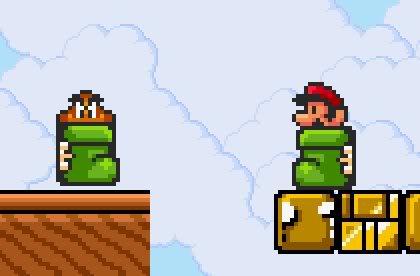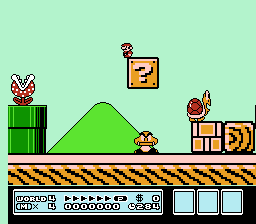
In the Japanese version, getting hit as Fire or Raccoon Mario will play the same animation as getting hit as Super Mario. This change makes the short demo that plays on the title screen that explains the general physics of the game "incorrect" in the international versions as Mario is clearly shown being reduced to Small Mario when being hit by a shell when he is Raccoon Mario, something that, bizarrely enough, was not fixed for either All-Stars or Advance 4. While Super Mario World went back to the Japanese system, this revised system became a series standard following New Super Mario Bros., and it was also retained in All-Stars. Apparently this was deemed too hard for overseas players, so it was changed: Anything above Super Mario reverts only to Super Mario when hit, then to Small Mario. In the Japanese version, getting hit while powered-up causes the player to shrink to Small Mario just like in the first two Super Mario Bros. All-Stars uses a similar fade-in, though much smoother thanks to the SNES' Mode 7 capabilities.īy far the biggest change between versions.

This fade-in was cut out for the international versions, which reduces the wait time by around one second per level.


In the Japanese version, a fade-in effect starts when the level appears, similar to the fade-out that normally occurs on the map screen when you enter a level. The floor also appears one line lower due to some timing changes in the MMC3 IRQ code.Īn extremely minor change, but the "WORLD" text in the hud during gameplay had an erroneous missing pixel in the Japanese version (although the version of it used on the world map hud is completely fine), which was fixed in the US version. The trademark symbol was repositioned in the international versions.


 0 kommentar(er)
0 kommentar(er)
